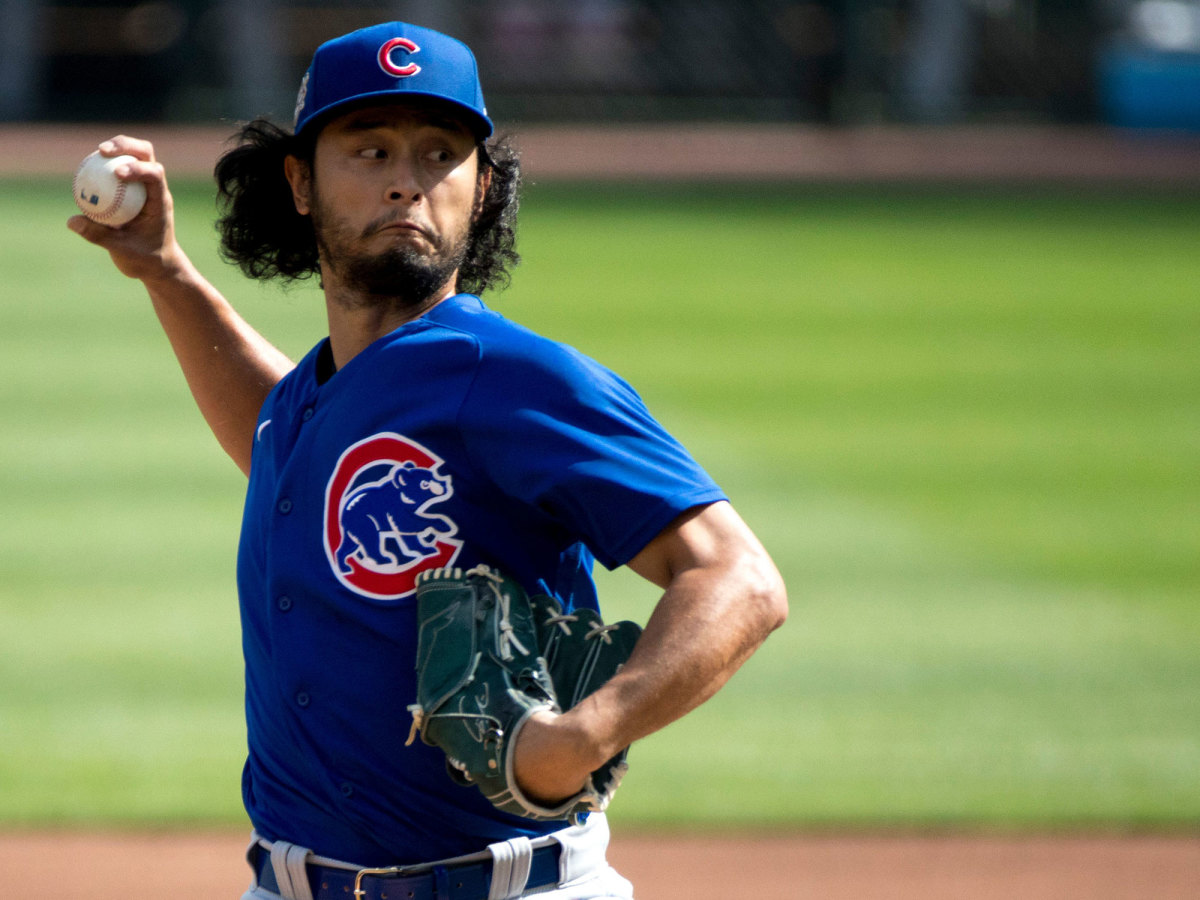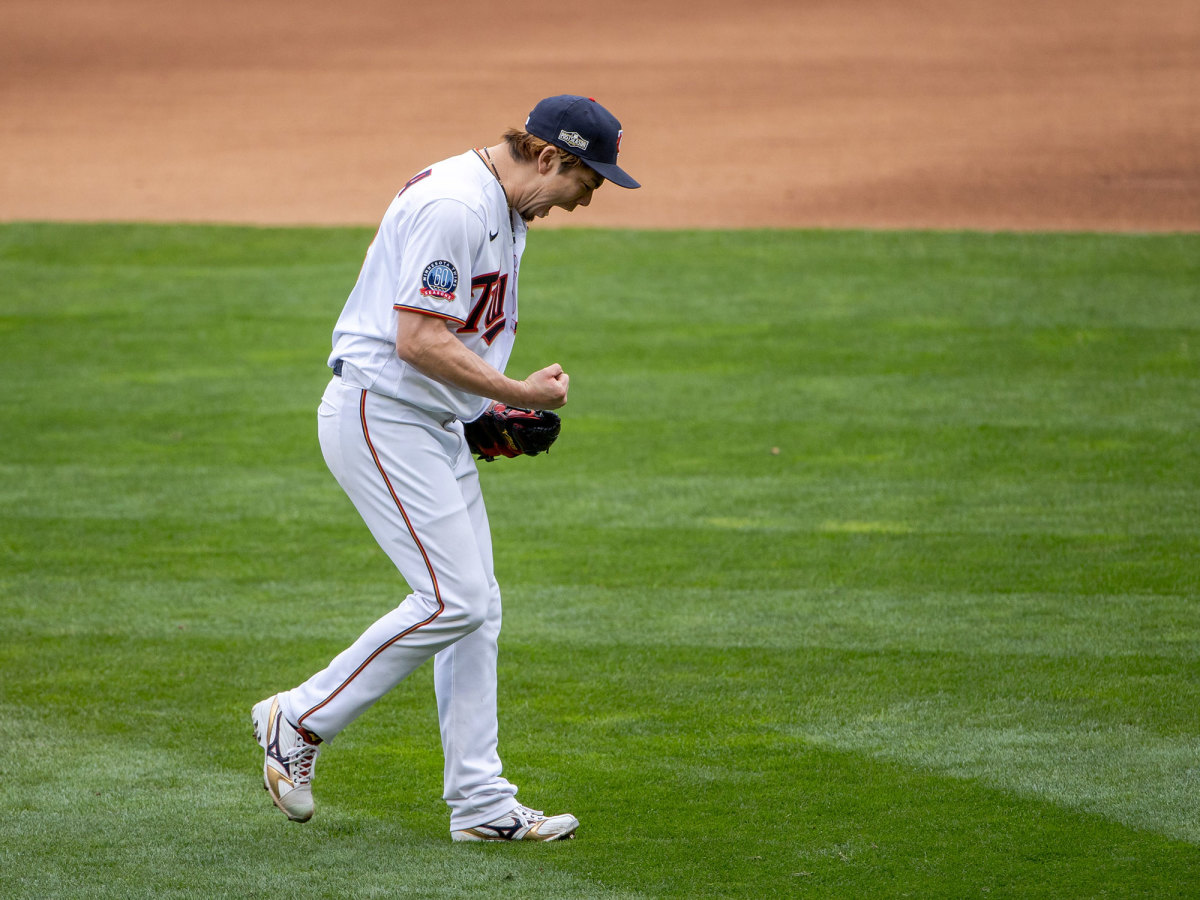Cy Young Predictions: Bauer or deGrom? Bieber or ... Bieber?
This year’s two Cy Young Award races represent the extreme ends of the spectrum: a no-doubt winner and what will likely end up being a photo finish.
In the American League, no pitcher matched what Shane Bieber did on the mound. He led the league in WAR, ERA, strikeouts and wins, otherwise known as the Triple Crown. The National League features a much tighter race, with all three candidates—Trevor Bauer, Yu Darvish and two-time reigning winner Jacob deGrom—having a strong case for the award. Let’s break down the races in my hypothetical ballot for each league, beginning in the NL.
Stats in bold indicate National League leader; stats in bold and italics indicate MLB leader.
National League
1. Trevor Bauer, Cincinnati Reds
5-4 (11 GS), 73.0 IP, 1.73 ERA, 0.80 WHIP, 100 K, 17 BB (5.88 K/BB), 9 HR, 2.88 FIP, 2.7 bWAR
Take a moment to skim over the stats from our three finalists—how do you pick one above the other two? All three allowed fewer than one base runner per inning. All three have nearly unhittable fastballs, with elite spin rates and sub-.200 expected batting averages against. And each ranked in the top 10 among qualified starters in strikeout rate, all clocking in above 30%.
But there can be only one Highlander, just as there can be only one Cy Young winner. Bauer gets the nod by the slimmest of margins. In the age of when pulling starters after two trips through the lineup has become the (at times detrimental) rule, Bauer pitched more than six innings in eight of his 11 starts this season. Darvish and deGrom combined for just nine such outings between the two of them. You might call six innings an arbitrary cutoff point (it is!), and a little digging will reveal that Bauer lasted exactly 6 1/3 innings in three of those eight starts (fair point!), but in a race this tight, we have to look far and wide for data points to separate three worthy candidates.

2. Yu Darvish, Chicago Cubs
8-3 (12 GS), 76.0 IP, 2.01 ERA, 0.96 WHIP, 93 K, 14 BB (6.64 K/BB), 5 HR, 2.23 FIP, 2.7 bWAR
The baseball world was given the gift of a rejuvenated Darvish in 2020, which was a welcome sight after he struggled in his first two seasons with Chicago. Darvish set career highs in 2020 in swinging strike rate (14.3%), home run rate (0.59 per nine innings) and walk rate (4.7%). His stuff was as filthy as ever, so it’s too soon to begin speculating about how the 34-year-old will perform as he progresses into the later stages of his career. But his improved control and command of each pitch in his eclectic arsenal adds confidence that this version of Darvish is here to stay.
3. Jacob deGrom, New York Mets
4-2 (12 GS), 68.0 IP, 2.38 ERA, 0.96 WHIP, 104 K, 18 BB (5.78 K/BB), 7 HR, 2.26 FIP, 2.6 bWAR
If the Cy Young Award was treated like a boxing championship belt, then deGrom would likely win. The two-time defending champion did nothing that would indicate he’s undeserving of retaining his title. deGrom’s swinging strike rate (21.6%) registered tops in the majors among qualified starters. There are no real holes in his arsenal. Looking at weighted on-base average (wOBA)—an advanced stat that measures hitters’ exit velocities and launch angles—deGrom allowed on each of his pitches illustrates this point. League-average wOBA in 2020 was .320. Each of deGrom’s four pitches—fastball, slider, changeup and curve—resulted in a wOBA of .254 or lower. There are pitchers with better individual pitches than deGrom, but few (if any) put it all together more effectively than he does.
American League
1. Shane Bieber, Cleveland Indians
8-1 (12 GS), 77.1 IP, 1.63 ERA, 0.87 WHIP, 122 K, 21 BB (5.81 K/BB), 7 HR, 2.07 FIP, 3.3 bWAR
There’s not much more that needs to be said for Bieber’s candidacy. He struck out 10 or more batters in eight of his 12 starts, and never allowed more than six hits in a single outing. Bieber’s curveball was among the most unhittable pitches in baseball—he threw it 26.3% of the time and limited opposing hitters to a .095 batting average and 51.5% whiff rate. Only two starters—Blake Snell and Tyler Glasnow—generated swings-and-misses at a higher rate on their curveballs than Bieber did. Bieber will be the fifth member of the Indians to win the Cy Young Award— joining Gaylord Perry, CC Sabathia, Cliff Lee and Corey Kluber (twice)—and will almost certainly be the first unanimous winner since Clayton Kershaw in 2014.
Friendly reminder that Bieber's playoff implosion—seven runs allowed in 4 2/3 innings against the Yankees—came after voting was completed. It won't factor into the result.

2. Kenta Maeda, Minnesota Twins
6-1 (11 GS), 66.2 IP, 2.70 ERA, 0.75 WHIP, 80 K, 10 BB (8.0 K/BB), 9 HR, 3.00 FIP, 1.6 bWAR
Choosing a runner-up is where things get really tough, as both Maeda and Ryu were excellent in their first season away from the Dodgers. Maeda was a control maestro, with the fourth-lowest walk rate (4.0%) among qualified starters. He was also among the most difficult pitchers to square up against, allowing what Statcast defines as a hard-hit ball (one hit with an exit velocity of 95 mph or higher) just 24.7% of the time—the second-lowest rate among qualified starting pitchers. Maeda was consistent all year, never allowing more than three runs in any start. His slight edge in dependability, as well as his aversion to hard contact, earns him the silver medal here.
3. Hyun Jin Ryu, Toronto Blue Jays
5-2 (12 GS), 67.0 IP, 2.69 ERA, 1.15 WHIP, 72 K, 17 BB (4.24 K/BB), 6 HR, 3.01 FIP, 3.0 bWAR
Ryu’s first season with the Blue Jays couldn’t have gone much better. His average fastball velocity dipped below 90 mph but that didn’t make his elite changeup any less effective. Opposing batters hit .185 against it, and the pitch had a minus-7 run value that ranked as the fourth-best among changeups by qualified starting pitchers. Ryu’s improved cutter helped compensate for his diminished four-seam heater, and he’d be wise to continue using that pitch at a higher rate. The gap between Ryu and Maeda is razor thin, and there’s a strong possibility that Ryu finishes second in the voting for the second year in a row. He slots in third here by a hair, as he didn’t have quite the same level of command as Maeda and gave up hard contact a bit more frequently.
